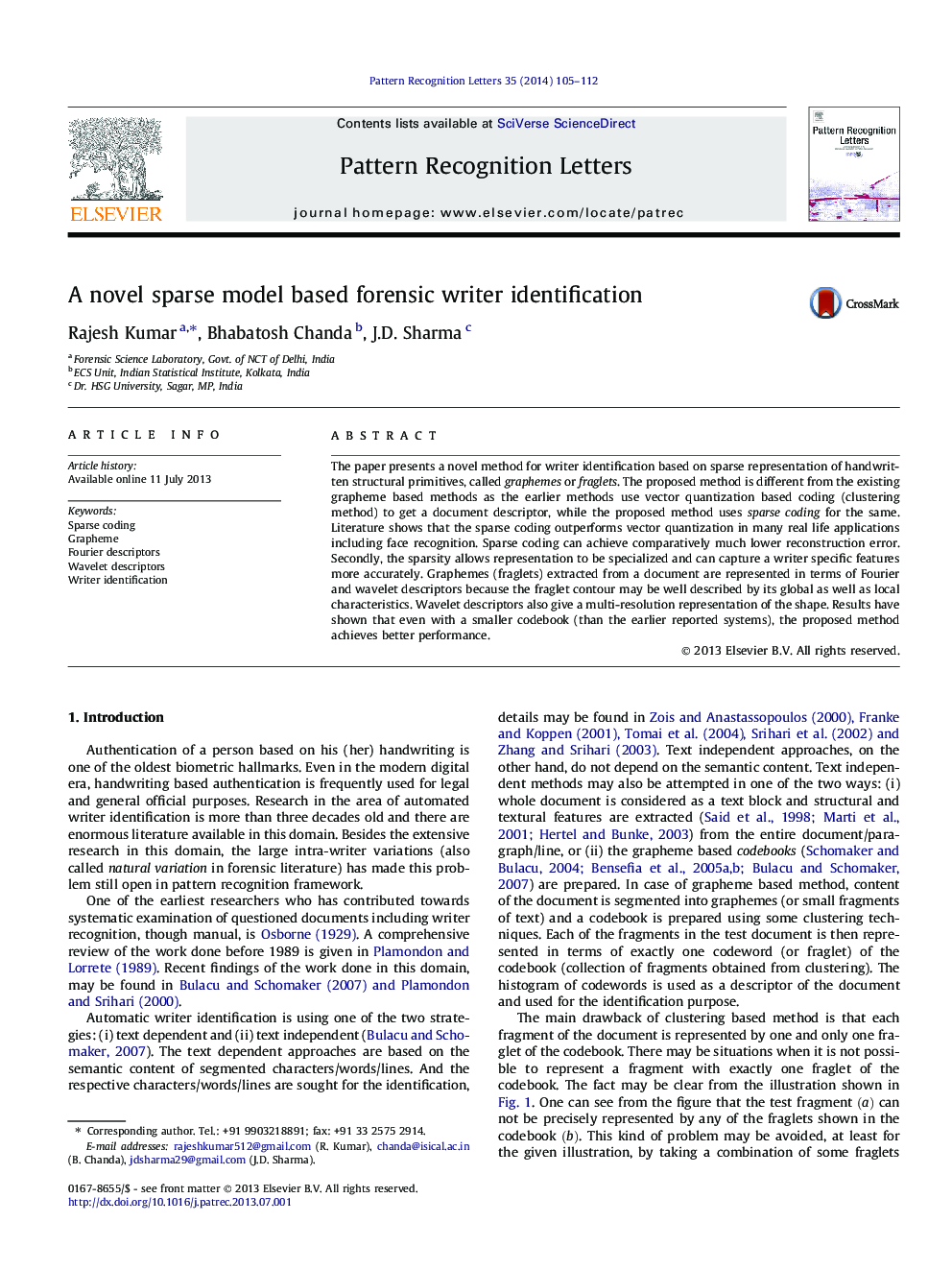| کد مقاله | کد نشریه | سال انتشار | مقاله انگلیسی | نسخه تمام متن |
|---|---|---|---|---|
| 536371 | 870505 | 2014 | 8 صفحه PDF | دانلود رایگان |
• A text-independent writer identification problem is addressed in sparse coding framework.
• The proposed system does not use clustering for dictionary learning unlike earlier systems.
• Graphemes are extracted from a given test document and used for the identification.
• Each grapheme is represented as a combination of Fourier and wavelet descriptor.
• Sparse model gives a low reconstruction error, which is evident from the results.
The paper presents a novel method for writer identification based on sparse representation of handwritten structural primitives, called graphemes or fraglets. The proposed method is different from the existing grapheme based methods as the earlier methods use vector quantization based coding (clustering method) to get a document descriptor, while the proposed method uses sparse coding for the same. Literature shows that the sparse coding outperforms vector quantization in many real life applications including face recognition. Sparse coding can achieve comparatively much lower reconstruction error. Secondly, the sparsity allows representation to be specialized and can capture a writer specific features more accurately. Graphemes (fraglets) extracted from a document are represented in terms of Fourier and wavelet descriptors because the fraglet contour may be well described by its global as well as local characteristics. Wavelet descriptors also give a multi-resolution representation of the shape. Results have shown that even with a smaller codebook (than the earlier reported systems), the proposed method achieves better performance.
Journal: Pattern Recognition Letters - Volume 35, 1 January 2014, Pages 105–112
